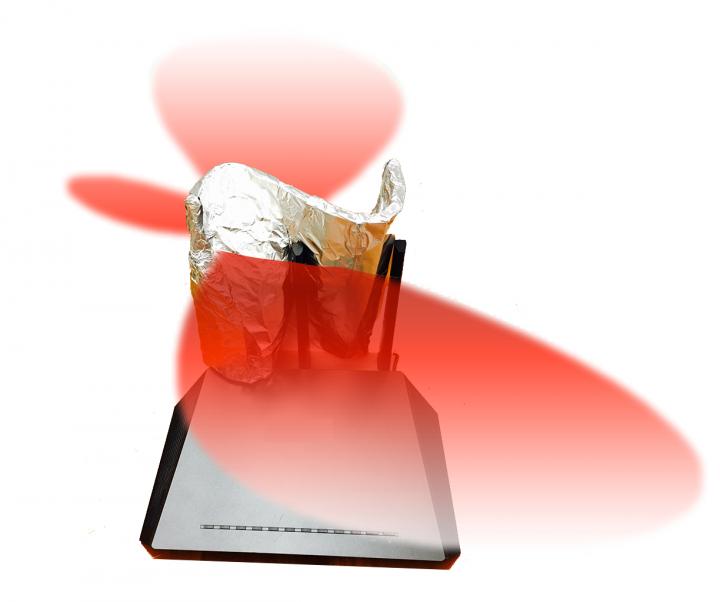Researchers at Dartmouth College have discovered that 3D-printed signal reflectors made out of foil and plastic “drastically reshape the wireless signal around a home.”
The exposed population is so enormous that any risk at all could trigger a significant number of preventable illnesses.
A team of researchers led by Dartmouth College may have finally solved the problem of how to inexpensively reshape wireless signal strength for indoor living spaces with multiple rooms. The same technology for decreasing home Wi-Fi radiation in living areas can increase signal strength in office areas and can also be used to strengthen wireless security.
The research, out of the Netherlands, relies on 3-D printing to produce a cheap, customized reflector that directs strongest wireless signals to where users want them most and away from where pregnant women or children spend much of their time, including sleeping areas.
“Through this single solution, we address a number of challenges that plague wireless users,” said Xia Zhou, an assistant professor of computer science at Dartmouth. “Not only do we strengthen wireless signals, we make those same signals more secure.”
Customizing the coverage of wireless networks inside buildings is critical for users to improve signal reception in desired areas while weakening signals in others. By shaping signals, users can increase wireless efficiency through lessening the most intense radiation within interior layouts undesirably located for the strongest signals.
Such a system can also make it more difficult for attackers by adding to existing security measures like encryption through physically confining wireless signals to limited spaces. This also leads to reduced interference.
Achieving the goal of improved wireless performance is particularly challenging indoors because of the complex interactions of radio signals with the environment.
Through experiments presented in the research paper, the team improves upon previous studies that placed an aluminum soft-drink can behind a Wi-Fi access point to strengthen signal in one direction. The current research generalizes this idea by presenting a systematic approach to optimizing reflector shapes for enabling a more developed set of signal distributions.
After assessing interior layouts and the target areas to strengthen or weaken signal strength, the Dartmouth research team placed a “computationally optimized” signal reflector around a wireless router. The reflector, composed only of plastic and a thin layer of metal, redirects wireless signals to the desired coverage areas.
After testing the approach in two different interiors for signal strength and speed, the researchers reported that optimized 3-D reflectors provide numerous benefits including reducing radiation where it isn’t wanted at low cost, and ease of use for non-expert users.
The researchers tested the reflector with a variety of off-the-shelf Wi-Fi access points, including those using the latest Wi-Fi protocol 802.11ac.
“With a simple investment of about $35 and specifying coverage requirements, a wireless reflector can be custom-built to outperform antennae that cost thousands of dollars,” said Zhou.
To create the technology, the researchers designed an algorithm that optimizes a reflector’s 3-D shape to target wireless coverage. The team also developed an approach to simulating how radio signals spread and interact with objects in their environment.
With information on specific interior space, locations of wireless access points and the desired target area, the system computes an optimized reflector shape in only 23 minutes.
Researchers found that the reflectors can decrease the strength of radiation by up to 10 dB where the microwave radiation is not wanted and increase strength by 6 dB where it is desired to be strong. The reflector is also relatively easy to place.
Because the current design is limited by its static shape, the research team will now study reflectors made of different materials so that the device can automatically adapt its shape when the interior layout changes. The team will also examine higher frequency bands such as millimeter waves and visible light.
###
The research is a joint effort by researchers from Dartmouth College, University of Washington, Columbia University, and UC Irvine.
A video demonstration of the research can be viewed at http://www.
This is the same wifi radiation emitted from your cell phone’s hotspot feature causing many health officials and advocates to urge that, as a precaution, people take simple steps to limit their exposure to microwave radiation such as using headsets and avoiding use of the devices when reception is weak, a situation that causes them to emit more radiation. Advocates also want to push manufacturers to engineer cellphones to reduce radiation exposure.








